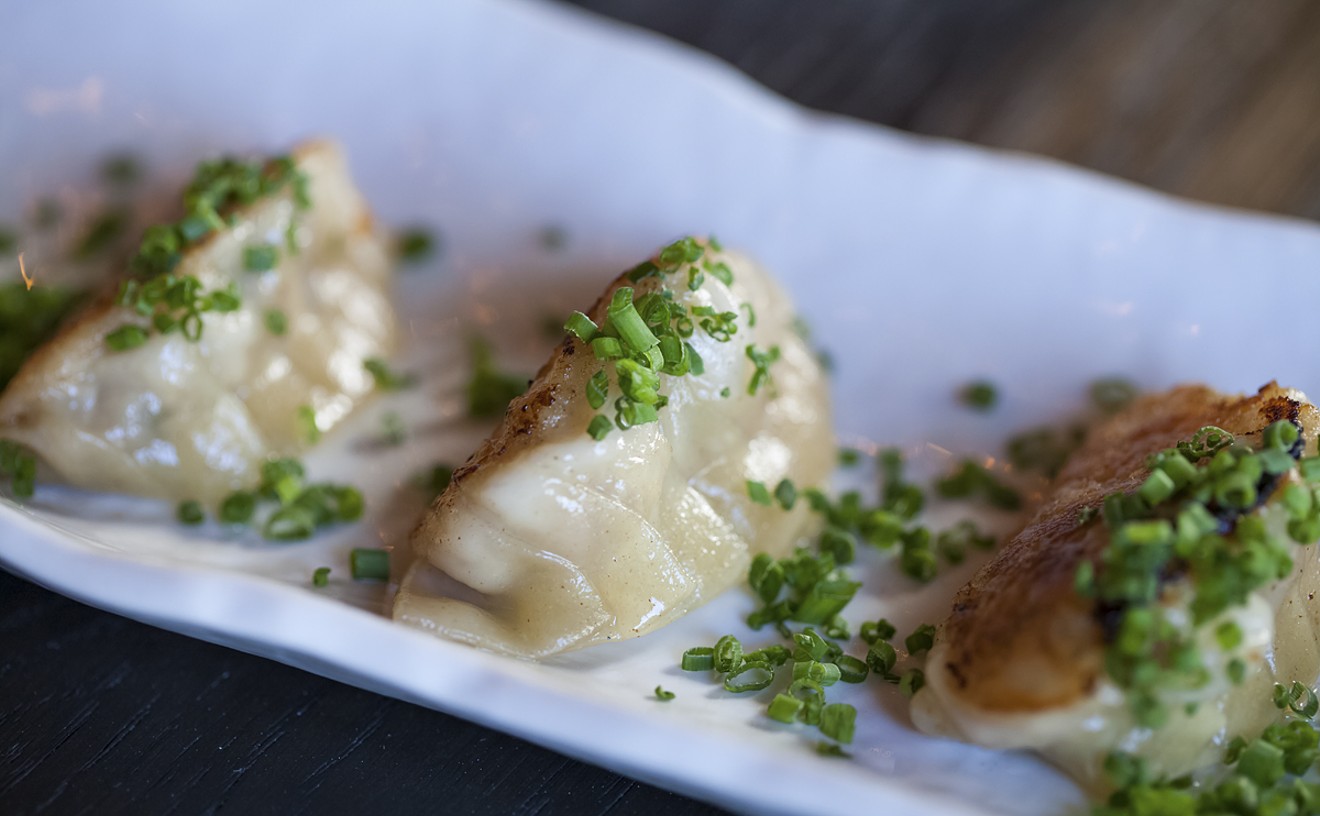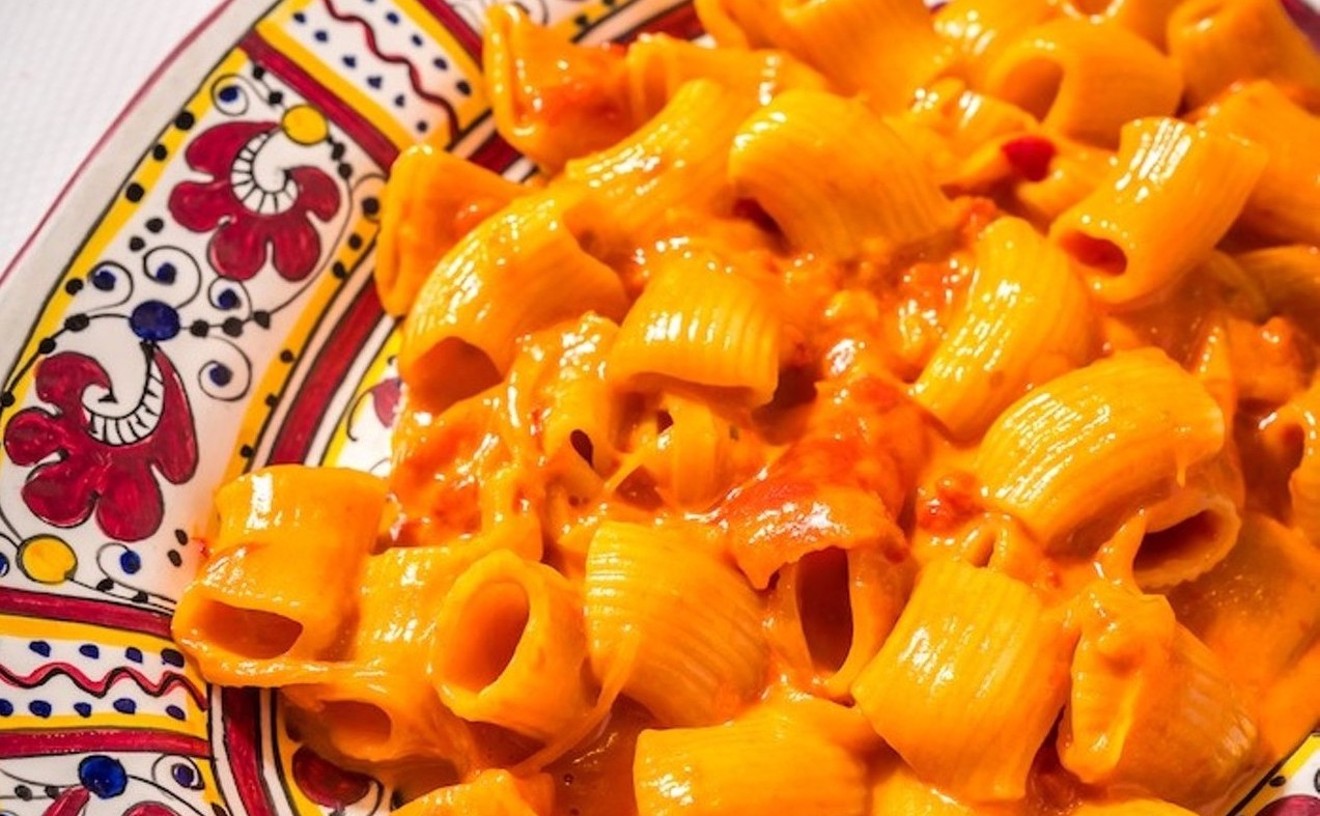Stride through the foyer of the Ritz-Carlton Coconut Grove on May 8, however, and between 7:00 and 9:00 p.m. you'll be treated to a most unexpected vision: the hotel's executive chef Roberto Holz resplendent in lederhosen and flecks of white asparagus. That's because Holz, a certified German master chef, will be celebrating white-asparagus season by demonstrating his skills with a specialized, adjustable peeler and this unique vegetable, pale as an albino.
From late April to mid-June in his homeland, Holz tells me, such a sight isn't at all unusual. The white asparagus, which is grown in mounds of earth like potatoes to prevent exposure to the sun, photosynthesis, and the formation of chlorophyll, is a delicacy cultivated throughout Europe, Asia, and the cooler parts of North America (states like Wisconsin and parts of Canada). But the northern European product is perhaps the most highly prized and eagerly awaited. During the six-week season, almost every restaurant in Germany offers an entire menu based on white-asparagus dishes, and Holz estimates that seven out of ten diners order them exclusively. There are even formal contests between chefs to see who can peel the fastest and the most accurately.
Preparation of the noble white asparagus, which is harvested in the early-morning darkness either by hand or special tool, is regulated by tradition and education. Both speed and uniformity are essential. The first is a question of supply-demand and workload. "When I was a sous-chef," Holz muses, "I must have peeled about 20 to 25 cases a day." At ten or eleven pounds per case, it's easy to see how the sheer weight would present a challenge.
Uniformity is a matter of quality control. Holz and his Bizcaya Grill restaurant chef Willis Loughhead are importing the pricey fresh vegetable from France and Holland this year at $70 per case wholesale; it costs about twice that retail. I found one Website, www.Earthy.com, selling a "baby" version for an exorbitant $29 per pound. "The best asparagus is from Germany, but they're impossible to get," Holz notes. Peru has a somewhat less expensive and more readily available variety on the market, but Loughhead warns against the South American stalks: "We did a taste test and the differences were amazing. The Peruvian asparagus were small, stringy, woody, and definitely more bitter." Holz nods, adding: "They almost taste like a completely different vegetable."
Naturally, with such high-end products, the less waste the better. In Germany, Holz assures me, only the most highly trained chefs are permitted to peel the white asparagus. It does take a certain technique, not to mention a resistance to carpal tunnel syndrome. You must brace the asparagus firmly against the inside of your wrist, with the bud held between thumb and forefinger, then scrape from top to bottom. The idea is similar to harvesting bark from oak trees to make corks -- remove just enough of the skin but none of the meat, and keep the asparagus completely round while doing so. Accidentally leaving skin on the stalks will make them stringy after cooking, and aesthetics demand that the asparagus be symmetrical.
After the stalks are peeled, the woody parts of the stems must be discarded. Holz accomplishes this by looking for the natural breaking point -- where the vegetable snaps off rather than bends -- of the first asparagus out of the box. He then uses the trimmed end, usually measuring about an inch, to decide where all the other stems should be split. Again, consistency is the goal.
The cooking method is also highly prescribed. A traditional broth is prepared with water, white wine, lemons, sugar, and salt, and then simmered for about twenty minutes. A quantity of butter is added at the last minute to prevent the creamy flavor from being boiled out, along with a couple of hunks of baguette, which will draw the bitterness from the asparagus.
To avoid oxidation, the peeled asparagus are kept chilled and under wraps until the liquid is ready -- a kitchen towel or cheesecloth does the job. Apparently asparagus have such amazing powers to regenerate their skin that it might behoove medical researchers to study it. Indeed Ford's Asparagus Farm in British Columbia notes on its Website that "the secret to choosing good asparagus lies in its freshness, handling, and how fast it grows. If not chilled and kept moist soon after picking, the fibrous 'woody' portion of the stem will actually climb the stock! Vitamin C content will be sacrificed along with the sugar, which rapidly turns to starch."
After all the stalks are manicured, they're tied into one-pound bundles, about five or six to a group, using pliable kitchen twine that won't cut into the vegetable or scar it. In Germany the asparagus are then steamed to their tender, earth-toned nuttiness in special pots that enable the stalks to remain vertical, but Holz and Loughhead compromise by laying them flat in a huge saucepan and covering the contents with another towel (they caution against using colored towels that might bleed dye and stain the stalks). "The towel makes them boil and steam at the same time," Loughhead explains.
Rules and regulations continue even after the asparagus bundles are cooked. The stalks are removed from the cooking liquid and placed in the freezer. The liquid itself is chilled separately. Once both are cool, the asparagus are placed back in the stock and refrigerated. The "bath" will block the asparagus from picking up any undesired flavors from other comestibles in the fridge.
Now what to do with all this asparagus? Make a meal, of course. From May 5 through 10, Holz and Loughhead will be offering prix-fixe asparagus menus for $48 per person (Eiswein and Riesling pairings will be additional), as well as an interactive white-asparagus cooking class on May 23rd. But don't think the meal itself will be vegetarian. Appetizers such as terrine of green-and-white asparagus will be garnished with house-smoked salmon, and entrées will include grilled Black Forest ham served with poached white asparagus and fingerling potatoes in Hollandaise, or truffle-breaded sweetbreads ragout in a chive crêpe on asparagus with morels. And don't worry -- desserts such as sautéed sweet-potato dumplings stuffed with plums in cinnamon bread crumbs will not have a hidden asparagus component. About sweets made with this distinctively flavored member of the lily family, Holz says, "I might do it in Germany, but here people would complain. It's just too crazy."
Peeling white asparagus in the lobby of a Ritz-Carlton while wearing your dad's twenty-year-old lederhosen, however, makes perfect sense.










